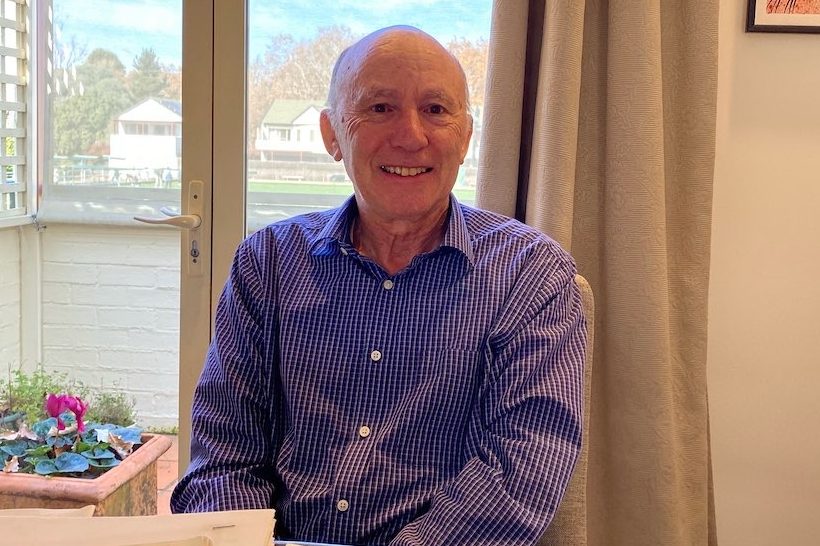
By Celeste Gibbs
Canberra’s Action on Smoking and Health (ASH) has been at the forefront of the ACT’s anti-smoking movement for more than 40 years.
And for its founder and advocate, Dr Alan Shroot, the growing presence of vaping means there’s still more work to be done.
Founded in 1983, ASH emerged in the haze of rising smoking rates, predatory advertising from tobacco companies and the adverse health effects plaguing Canberrans. Nearly half of all Australians over the age of 18 were smoking at the time, according to the Australian Bureau of Statistics, around this time.
Reflecting on the organisation’s four decades of activism, founder and advocate Dr Alan Shroot says: “We’ve done a lot of good work, with a lot of good people. I’m proud of what we have done.”
ASH was born from targeting a newspaper advertisement. When the then Prince Charles visited Australia, the Sydney Morning Herald published a photo of the royal family above a smoking advertisment.
In response, Dr Shroot and ASH co-founder Garreth Smith made an advertisement of their own, one to create ASH in Canberra. It lit local community interest with 70 immediate responses and an additional 40 people turning up to the group’s first meeting.
“People joined because they agreed about banning tobacco advertising and smoking in public spaces,” Dr Shroot says.
“There we were up and going, we were not a minority of one or two, but we were the silent majority.”
But silent they weren’t. ASH routinely lobbied representatives, wrote letters and press releases, and protested.
Dr Shroot says his most memorable moment of protest was interrupting the then Canberra Festival for its tobacco sponsorship and advertising of a family event.
“We got rid of tobacco advertising at the Canberra Festival,” he says.
“A week after the Canberra Festival I got a call from a member of its committee who said: ‘You’ll be pleased to know we won’t be using any more tobacco advertising’.”
They were effective. According to Tobacco in Australia, efforts from campaign groups such as ASH directly attributed to the noticeable decline in smoking in the 1980s and 1990s, as well as increased tobacco and smoke-free legislation.
ASH was directly involved in this legislative shift also, clearing the air for the ACT’s politicians. Dr Shroot says one of its landmark achievements was successfully lobbying the then Liberal ACT government, and working with Health Minister Gary Humphries to raise the legal age to buy tobacco products.
Similarly, ASH was instrumental in the development of the ACT’s smoke-free legislation in the early 1990’s. ASH worked with local restaurants to trial smoke-free evenings, ran surveys to gauge support (a whopping 80 per cent) for such legislation and worked with the ACT government to support its implementation.
“Gary Humphries told us: ‘Don’t underestimate the effect all that lobbying has done’. It gave the politicians the confidence to do what needed to be done,” Dr Shroot says.
And yet, the air isn’t clear today. While ASH celebrates its achievements, its members are confronted with new challenges – namely, the rise of vaping, especially among young people.
It’s a pressing concern, the Australian Institute of Health and Welfare (AIHW) has recently found that the number of young people using e-cigarettes has doubled since 2019.
Dr Shroot is concerned about the impact of vaping on the community. “It’s the same tobacco industry using the same techniques they used years ago,” he says.
“And I believe, in time, it will be shown to be just as dangerous as tobacco smoking already is.”
According to Lung Foundation Australia (LFA), this is right. LFA has marked vaping as a “gateway” for nicotine addiction, and reports that vaping can cause irreversible lung damage, nicotine addiction, unintentional poisoning, burns, seizures and cancer caused by carcinogenic chemicals.
So, as it marks its 40th milestone, ASH finds itself as just as necessary as it always has been, but finds itself grappling with an ageing membership and declining public interest.
Dr Shroot isn’t giving up, though. He and the rest of ASH remain steadfast in their commitment against smoking and vaping in the ACT.
“I wish we had outlived our usefulness,” he says, “but we haven’t now that vaping has come along. But we’ll keep doing the work that’s needed.” The fight isn’t over yet.
Anyone interested in joining or supporting ASH can contact Dr Alan Shroot at ashroot@iinet.com.au.
Who can be trusted?
In a world of spin and confusion, there’s never been a more important time to support independent journalism in Canberra.
If you trust our work online and want to enforce the power of independent voices, I invite you to make a small contribution.
Every dollar of support is invested back into our journalism to help keep citynews.com.au strong and free.
Thank you,
Ian Meikle, editor





Leave a Reply